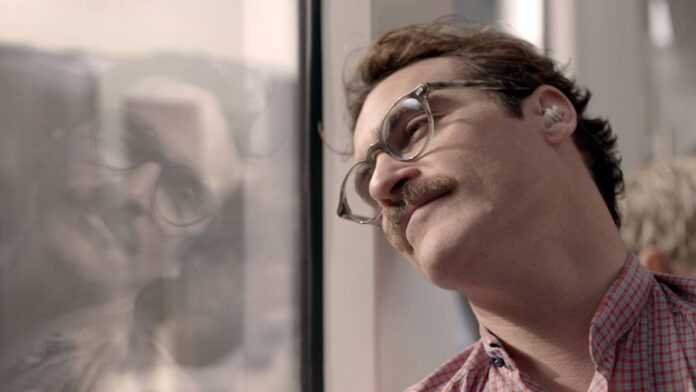By Juliana Schroeder 2014
This article was originally published on The Psych Report before it became part of the Behavioral Scientist in 2017.
Early in the movie Her, writer Theodore Twombly (Joaquin Phoenix) has a conversation with his new Operating System, Samantha (Scarlett Johansson), for the first time. Just moments into the conversation, Theodore expresses amazement: “You seem like a person – but you’re just a voice in a computer.”
Indeed, Samantha exists only as a voice in Theodore’s ear. Prior to watching the film, movie viewers may, understandably, have been doubtful that Samantha’s character would seem real without a physical body. Critic Christopher Orr writes in The Atlantic, “Her voice – breathy, occasionally cracking – warms the entire film.” Orr further remarks, “[Johansson’s] Samantha is one of the more recognizably human characters of the movie year.”
Among the many big questions that the movie Her tackles are that of humanness: What does it mean to be human? Why does Samantha seem as human – or even more human – than other characters in the movie despite being only a voice? In Her, Johansson’s voice brings Samantha’s character to life, and Theodore’s love for her feels not just believable, but entirely plausible. But how? How can a person fall in love with just a voice?
According to our research, currently, in preparation, the voice may uniquely communicate the presence of mind and, ultimately, fundamental aspects of being human.
A person’s voice is directly and often immediately linked with his or her thoughts and feelings in verbal language. Voice is a conduit through which complicated mental states are translated and communicated to others. In our research, we predicted that voice can be humanizing: that it conveys the presence of a humanlike mind through paralinguistic cues (i.e., the vocal cues that accompany language including loudness, rate, and pitch). In a series of laboratory experiments, we tested whether hearing a person’s speech makes him or she seem more “mindful,” that is, more thoughtful, emotional, and even more human, than reading a person’s speech (or writing).
Why is it so much more plausible to fall in love with Johansson’s voice than with SIRI’s? To viewers, the answer seems obvious: Johansson is a person, SIRI is a robot. But consider Theodore’s position: essentially, he’s in love with a more developed version of SIRI.
Our research suggests that it was not what Johansson said but rather how she said it, that made Samantha seem so real. In another experiment, we examined two different types of voices: those with natural paralinguistic cues – loudness, pitch, and rhythm typical of human language – compared to those with reduced paralinguistic cues.
Shown in the graph, we compared Johansson’s and SIRI’s pitch variance to the pitch variance of the natural and flat voiced actors from our experiment. As expected, Johansson’s pitch variance measures similar to those of the natural voices whereas SIRI’s mimics those of the flat voices. Johansson’s voice is expressive and effusive; SIRI’s is not.

The movie Her illustrates the same conclusion that we draw from many psychology experiments: Voice – if wielded naturally – can be a powerful tool to convey presence of a humanlike mind. In Her, it was a voice that made the movie more about love and humanness than delusion and machinery.
–
The movie implies the idea that computers are social actors. Computer as social actors(CASA) addressed that the way people communicate with technologies like computers, television, and many other new media like treating real people and environments. The theory concluded that because our brain has not developed enough to cope with current technology, we could potentially be having real social relationships with the technology just like the way we relate to other humans. This explains the intimate relationship Theodore shares with Samantha.
And the article explores the question of “What does it mean for artificial intelligence to be viewed as human?” in the context of the movie Her. It concluded that it’s the voice that makes the biggest difference. Though the movie is set in the distant future, it would be interesting to contemplate the idea of how the ai can provide a sense of community for people who work out at home.




